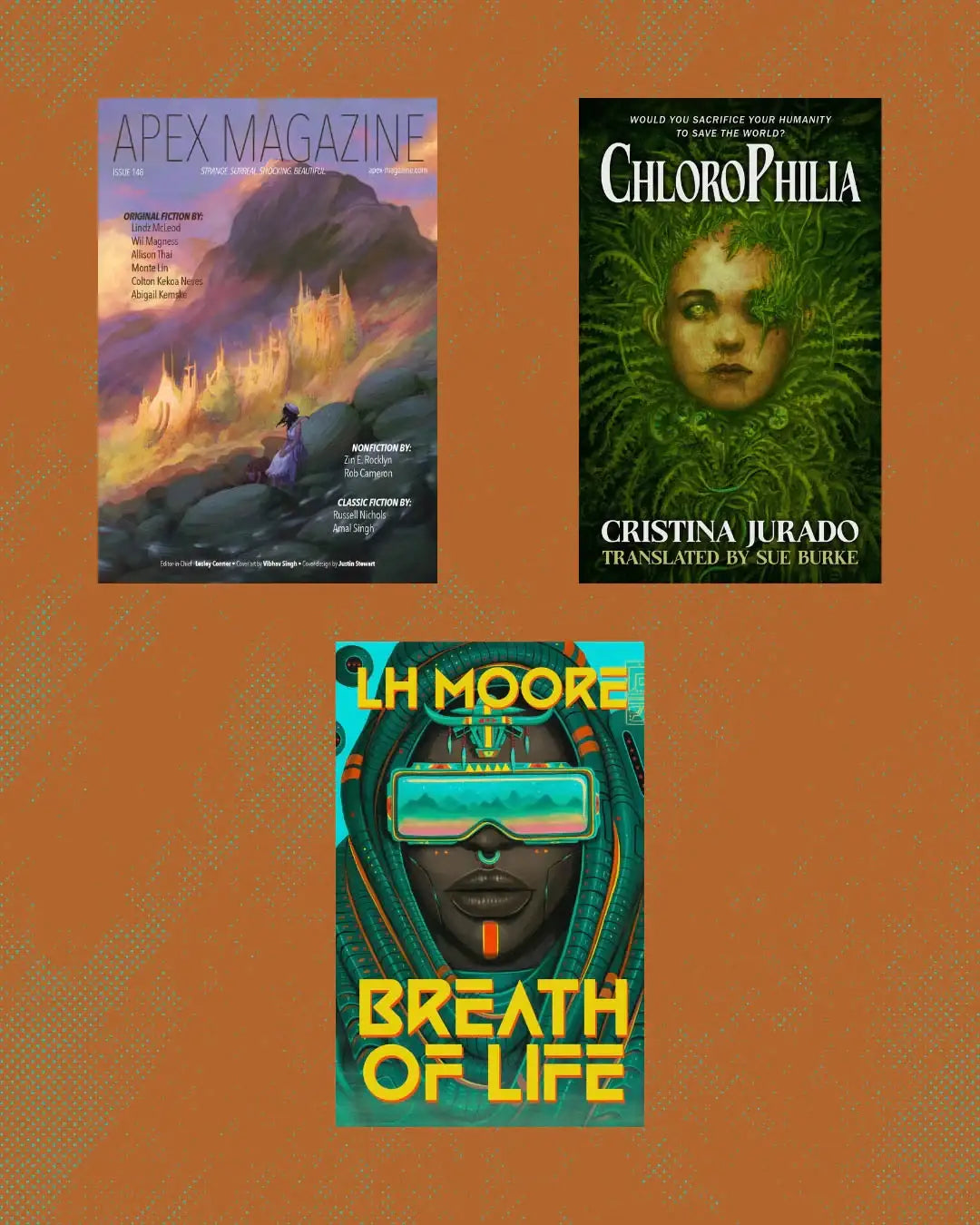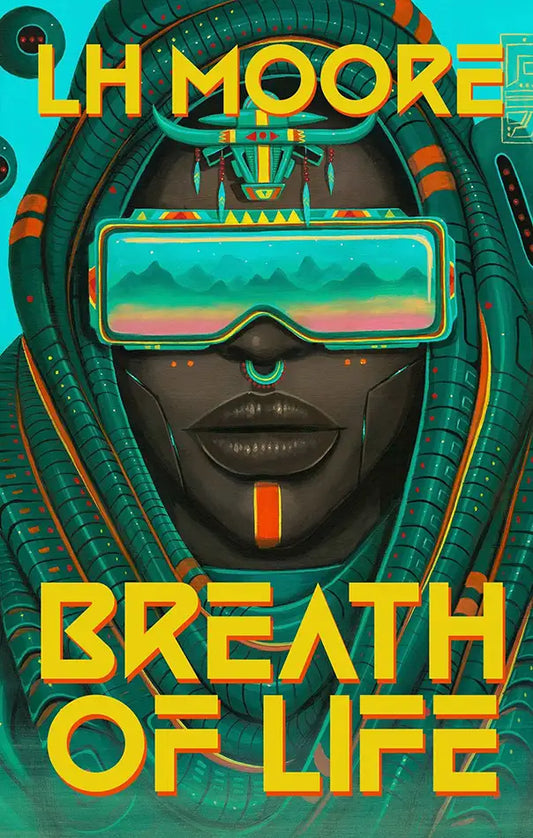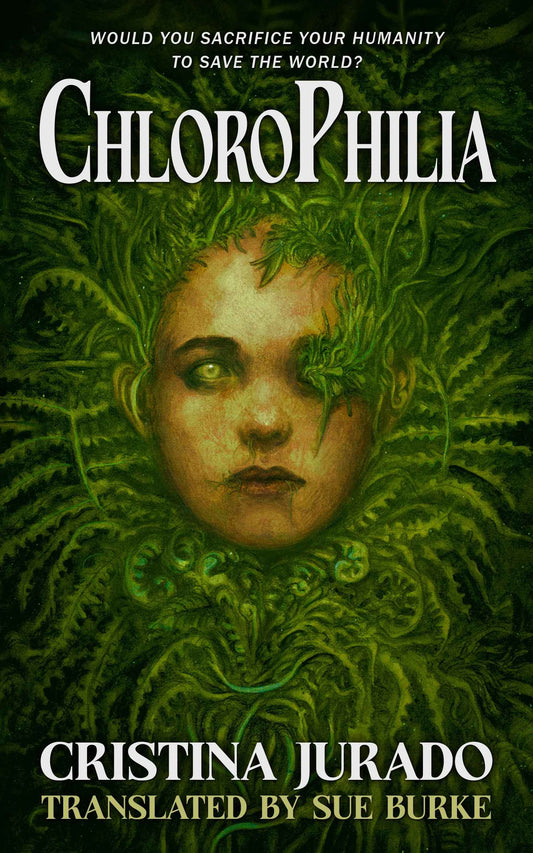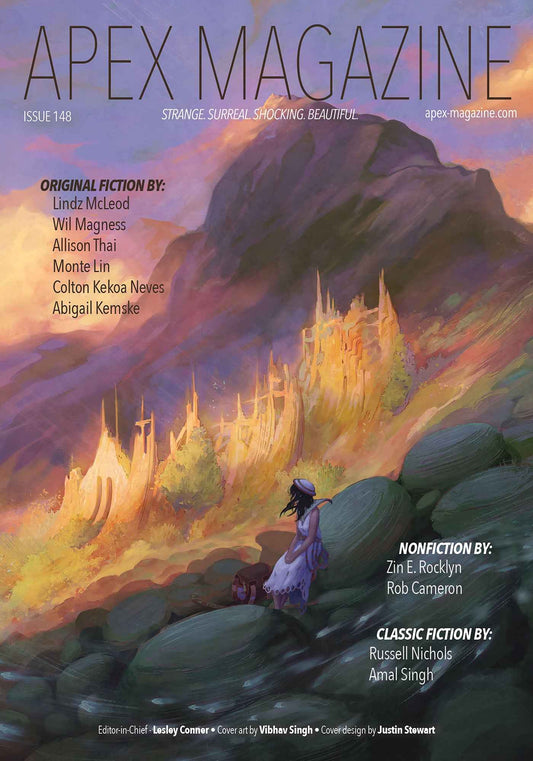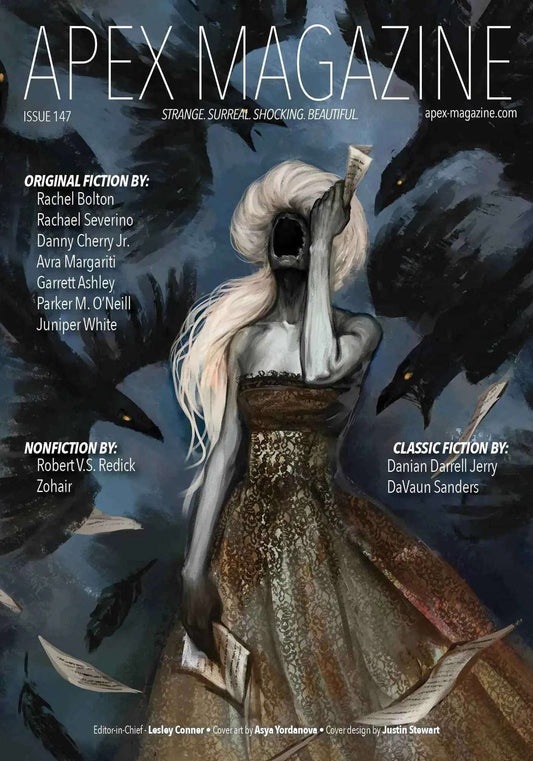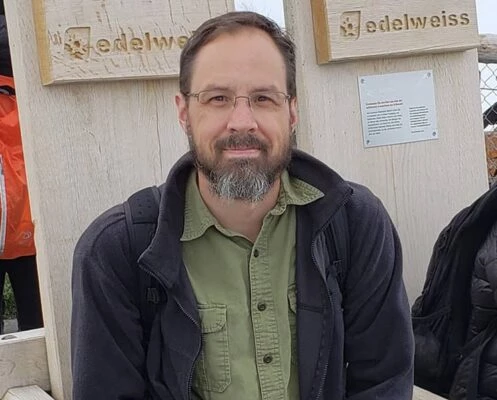
This month’s beautiful Apex Magazine cover is by Joshua Hutchinson. Hutchinson, a concept artist and illustrator currently working at Atomhawk Design Ltd., produces artwork for video games and pursues his wonderful, world-building artwork in his spare time.
APEX MAGAZINE: “Boy and Bot 3—Arriving Home” is part of a series of images you’ve created, with the same two characters. How has the story evolved as you’ve created each piece? Does working on each piece change any of your ideas of the overall story?
JOSHUA HUTCHINSON: I usually take each image as it comes. I know the general storyline that I want and that has not changed much during the creation of each piece, but the scenery and surrounding environment is often made up on the spot. However, I will take into account the previous image in the series and try to connect the two with certain elements. For example, in the second image, the boy, named Marvin, is depicted dragging the robot through the sandy canyon and in the third image he emerges from the canyon to take a rest in the sandy foreground before the grasslands of his hometown begin.
AM: Many of your works feature vast landscapes, with characters often just a small part of the world we see. How do you work your characters into the landscape, and what are the challenges of visually bringing the intimacy of a character into massive worlds like these?
JH: A lot of the challenge comes down to making the characters look like they belong in the environment. I have to take into consideration their clothes primarily, are they appropriate for the terrain they’re traversing. Secondly, I have to consider colours, which in my case, tend to be relatively bright and vivid in order for them to stand out in the vast landscape and avoid going unnoticed by the viewer.
AM: Pieces like “The Dementors” show your interest in other fan art, but from a different angle or idea from other, more typical fan art styles. Do styles like that stem from wanting a fan piece to look specifically different from all of the others out there, or is it simply the visual idea that struck you as interesting?
JH: I haven’t done much fan art, but in the case of "The Dementors," the only thing I was sure of is that I wanted to take the iconic scene where the dementors attack the train on the way to Hogwarts, but put that into a different setting. As for the style, I am not doing it to be purposefully different, but rather just doing it in the style that I know and have been doing for quite sometime. I think people who do fan art in their own art style makes the piece vastly more interesting.
AM: Your landscape pieces seemed to be grounded in reality, albeit often with a twist of environments or colors. As you are creating worlds, at what point in the process does an environment become your own world? Is a twist away from reality difficult, or a natural feeling as you work?
JH: I would say that, in general, the twist begins to happen around half way through the piece after I have roughly established the basic environment. As I start in black and white usually, the twist comes with quirky silhouettes for buildings, characters, or rock formations and then that is only exaggerated by my choice of colours. I still experiment a lot with these steps but it hasn’t ever been particularly difficult for me. The key is to just be really loose and non-committal to your shapes.
AM: Your pieces range from technological, detailed streets to wide open, natural vistas, and everything in between. Do you find cities take a different mindset than natural environments? Are there different rules that might apply to the types of characters you show in each, or their actions?
JH: Yes, I do think it takes a different mindset when taking on a city rather than a natural environment. With a natural, more organic environment, I feel a lot less restrained and can allow for more ‘happy accidents’ to occur because nature is never perfect. Cities however, require more thought due to significantly more emphasis on factors such as perspective and building design, which can be quite time-consuming. The rules of applying characters to the scene are generally the same in that outfit and colours are the most important in my opinion. However, in cities I feel there is an obligation to make the characters more dynamic as they are reacting to many more stimulants in their immediate surroundings, i.e. other people, vehicles, shops, noises etc.
Make sure to check out Hutchinson’s other works on his website at www.joshuahutchinson.co.uk, which includes links to his other online pages. He shares work-in-progress shots, news on upcoming images, tutorials, and other content related to his artwork.
